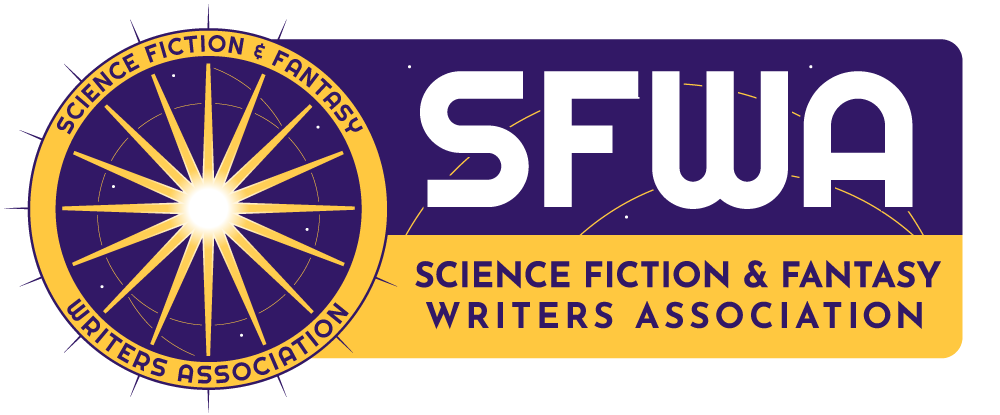How to Navigate the Publishing Industry with Social Anxiety
by Marie Croke
 Publishing attracts story-lovers—readers, writers, gamers, dreamers—many of whom want to do more than just write their stories. They want to be out there, have a presence readers can find, yet they simultaneously struggle with anxieties that send them spiraling or make them physically sick.
Publishing attracts story-lovers—readers, writers, gamers, dreamers—many of whom want to do more than just write their stories. They want to be out there, have a presence readers can find, yet they simultaneously struggle with anxieties that send them spiraling or make them physically sick.
Conquering these fears in the service of our dreams can feel insurmountable.
There’s a comic strip that you might be familiar with by Justin Boyd, found here, one that documents a man standing within his red comfort zone, who then races to reach a large machine super far away in order to slam a giant button that reads “DO A THING.” In the last panel, he throws himself back into his comfort zone, collapsing on the ground in abject relief.
This comic showcases quite well why those of us who are struggling with anxieties don’t do something terrifying again: Because now we know just how terrible the experience is, and our nervous system will do anything to convince us not to put ourselves in that position again.
So, how do we actually do the thing in such a way that we’re not collapsing in pure exhaustion from terror afterwards? How do we accomplish our goals without our bodies and minds sending warning claxons, demanding we find any way to avoid the thing?
We start a LOT closer to our comfort circle.
Identify
Before you start, I want you to craft a master list of all the social or socially-adjacent activities you wish you could do within the publishing sphere. If you don’t like paper, you can use a spreadsheet or an organization app. Some examples you could include: attend conventions, submit your stories, speak to an author/editor you admire, meet up with a professional peer, post on social media, keep a writing blog, travel, speak on panels, moderate, volunteer, sign books, manage a vendor table, attend a kaffeeklatsch, etc.
Everyone has differing fears and everyone’s fears are valid, so take the time to write out every single activity that sends a flutter in your heart, no matter how silly others have made you feel about it. Many years ago, I couldn’t even push the send button on any emails related to publishing and needed someone else to do it, so you’re not alone. You’re never alone.
Separate
Next, you’re going to divide that master list.
Imagine your comfort circle—your little red circle on the ground around you. Now imagine where each of those activities on your list fall because, while they all might fall outside your comfort circle, they aren’t all falling in the same place. Begin separating every activity into columns depending on the particular level of anxiety you feel about each. Label the columns. (e.g., Distant Dreams, Maaaaybe I Could Do This?, With a Friend Perhaps. Or use the basic Easy, Intermediate, Hard, Impossible.)
Really think about these labels and your placement. Judge each activity based on your own bodily and mental reactions. If you need a dozen columns, then use them. Most importantly though, consider each piece of an interaction separately. For instance, attending a convention does not mean you need to talk to anyone.
Destroy
You don’t defeat giant end-game bosses by skipping the rest of the storyline, so we’re not going to do that here either. Pretend those Hard and Impossible columns don’t exist. Instead, you’re going to focus on the Easiest activities for you, the ones you would much rather do if given the choice. Because they will look so much more attractive compared to the harder columns.
Craft an action plan, one that’s feasible, that doesn’t make you want to immediately run away from this essay. If that means, at first, you do one small thing every two months or only tackle the single easiest activity on your list, so be it! Just make sure there is a plan in place with items that can be checked off.
The biggest benefit that we’re looking for here is showing your nervous system that this activity isn’t going to kill you, that you are going to destroy it. That’s why we start with whatever your body and brain won’t have as visceral a reaction to, the ones that won’t leave us as puddles of exhaustion.
Evaluate
Every year, recreate your list and divide the activities up again. Then, compare where you’ve placed every activity to where you’d placed it before.
Over time, with focused action on tiny little steps touching just outside your comfort circle, you’ll discover some impressive growth. You’ll see your comfort circle expand to encompass things that once sent your heart pounding and are now only minor worries.
Eventually, you won’t even have an Impossible column.
Keep in Mind
- You do not need permission to join a public or semi-public conversation online. Most people desire engagement with others if they’re in the public sphere, so as long as you treat them with respect, they will welcome your interaction.
- Don’t compare your journey with someone else’s. That person might be extroverted or unafraid so their social actions have never been shackled. That person might have held many jobs that have taught them social skills and coping mechanisms.
- Remember that social interaction is a skill and skills are learnable. That doesn’t mean your anxieties will abruptly disappear. However, practiced skills mean that muscle and mental memory will hold you in good stead even during moments of extreme distress.
- Practice in low-stakes areas. Exchange a few words with the cashier; chat about a hobby in a forum; attend local library events and introduce yourself to one person.
- Reward yourself. You attended that convention even though you hid in your room half the time? That’s an achievement! You sat on a kaffeeklatsch and asked one whole question? Awesome! You set up a social media account even though you haven’t yet managed to post? That’s fantastic! Reward yourself for every fear you face along the way. Because you know how hard it was for you.
 Marie Croke is a fantasy, science-fiction, and horror writer with over 45 stories in publication. She is a graduate of the Odyssey workshop, first place winner in the Writers of the Future contest, and her work has been published in Beneath Ceaseless Skies, Apex Magazine, Diabolical Plots, Flash Fiction Online, Fireside, and Cast of Wonders among many other fine magazines and anthologies. She has also previously worked at multiple magazines, including khōréō and Dark Matter, and written articles for writers for The SFWA Blog. She lives in Maryland with her family and enjoys crocheting, kayaking, and aerial dancing in her free time.
Marie Croke is a fantasy, science-fiction, and horror writer with over 45 stories in publication. She is a graduate of the Odyssey workshop, first place winner in the Writers of the Future contest, and her work has been published in Beneath Ceaseless Skies, Apex Magazine, Diabolical Plots, Flash Fiction Online, Fireside, and Cast of Wonders among many other fine magazines and anthologies. She has also previously worked at multiple magazines, including khōréō and Dark Matter, and written articles for writers for The SFWA Blog. She lives in Maryland with her family and enjoys crocheting, kayaking, and aerial dancing in her free time.


